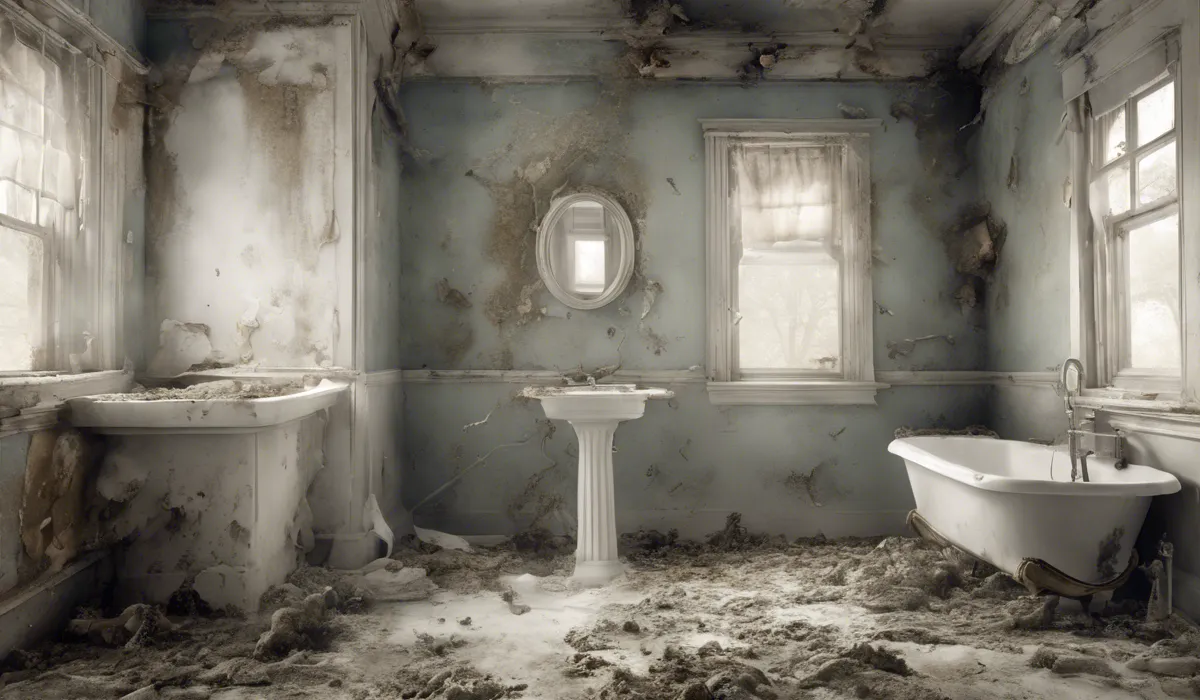To clear the mold when you have a mess, identify the affected area, use a mixture of bleach and water or a commercial mold remover, scrub thoroughly, and ventilate the space. Always wear protective gear to avoid inhaling spores.
Understanding Mold

Definition of Mold
Mold is a type of fungus that grows in the form of multicellular filaments called hyphae. It thrives in moist environments and can spread quickly if not managed.
Molds are an essential part of nature, helping break down organic matter, but they can become troublesome when they grow indoors.
Common Types of Household Mold
Several molds commonly invade homes. Aspergillus is often found on food and in air conditioning systems.
Cladosporium can grow in cool areas, while black mold, or Stachybotrys chartarum, is notorious for growing on water-damaged building materials and can be quite dangerous.
Health Implications of Mold Exposure
Exposure to mold can lead to health problems, especially for those with allergies, asthma, or weakened immune systems.
Symptoms can include sneezing, coughing, skin rashes, and in severe cases, lung infections. It is essential to address mold issues promptly to protect your health.
Signs and Symptoms of Mold in Your Home
Be on the lookout for musty odors, visible mold growth, water damage, or discoloration on surfaces.
Health symptoms such as persistent sneezing, coughing, or headaches when indoors can also be telltale signs of mold presence.
Effective Mold Cleaning Techniques

Safety Precautions Before Cleaning Mold
Before tackling mold, gear up with gloves, a mask, and goggles to protect yourself from harmful spores.
Ensure the space is well-ventilated and cover any vents to prevent spores from spreading to other areas during cleanup.
DIY Mold Cleaning Solutions
For small mold problems, you can use a mixture of bleach and water or a commercial mold remover.
Apply the solution to the affected area, scrub thoroughly with a brush, rinse the area, and dry it completely to eliminate any lingering moisture.
When to Call a Professional?
If the mold covers an area larger than ten square feet or is caused by sewage or contaminated water, it is time to call a professional.
They have the tools and expertise to safely remove large infestations without compromising your health.
Preventative Measures to Keep Mold at Bay
After cleaning, prevent mold from returning by fixing leaks, drying wet areas immediately, and using dehumidifiers and exhaust fans.
Regularly cleaning and inspecting your home for signs of moisture can also help keep mold at bay.
Long-Term Mold Prevention Strategies

Importance of Ventilation and Airflow in Your Home
Good ventilation helps reduce moisture and prevents mold growth. Use exhaust fans in bathrooms and kitchens, open windows when possible, and consider a whole-house ventilation system for continuous air exchange.
Controlling Humidity Levels
Keeping indoor humidity levels between 30-50% can significantly reduce the risk of mold growth.
Use hygrometers to monitor humidity, and employ dehumidifiers to maintain the right levels. Fixing leaks and ensuring proper insulation can also help control humidity.
Regular Cleaning and Maintenance Tips
Regularly clean your home to remove potential food sources for mold. Pay special attention to bathrooms and kitchens where mold is more likely to grow.
Inspect your home for signs of moisture and address issues promptly to prevent mold from taking hold.
Building Materials and Practices That Resist Mold Growth
When renovating or building, choose materials that resist mold growth, such as mold-resistant drywall or paint.
Proper construction techniques that prevent water intrusion are also critical in preventing mold.
FAQs About Clearing Mold
How do I identify the affected area with mold?
FAQ Answer: Look for visible signs of mold, which can appear as black, white, green, or brown patches or a musty smell in damp areas.
What is the best mixture to clear mold?
FAQ Answer: A mixture of one part bleach to three parts water is commonly used, or you can opt for a commercial mold remover for the job.
How should I scrub the mold off surfaces?
FAQ Answer: Scrub the moldy area thoroughly with a brush or sponge after applying your chosen cleaning solution.
Why is ventilation important when clearing mold?
FAQ Answer: Proper ventilation helps to dry out the area and dilute any harmful spores that might be released into the air during cleaning.
What protective gear should I wear when dealing with mold?
FAQ Answer: Wear protective gloves, eyewear, and a mask or respirator to avoid direct contact with mold and inhaling spores.
Final Thoughts
To effectively address mold in your home, promptly identify and treat the compromised area with a bleach and water solution or a commercial mold remover. Scrub the space well and ensure it is well-ventilated during and after the process.
Don’t forget to wear appropriate protective gear to safeguard against mold spore inhalation.
